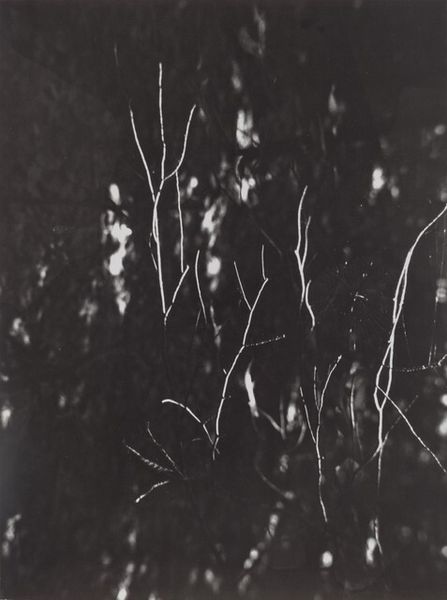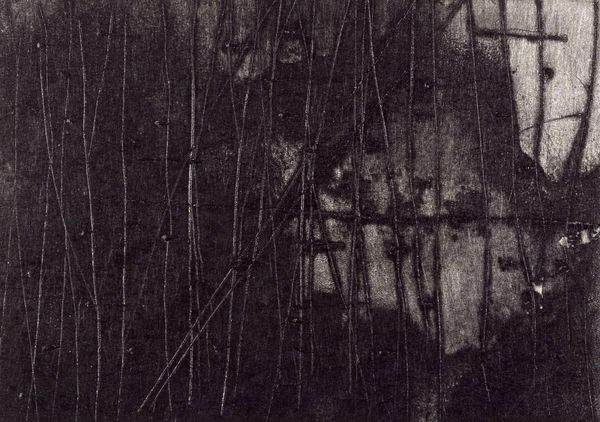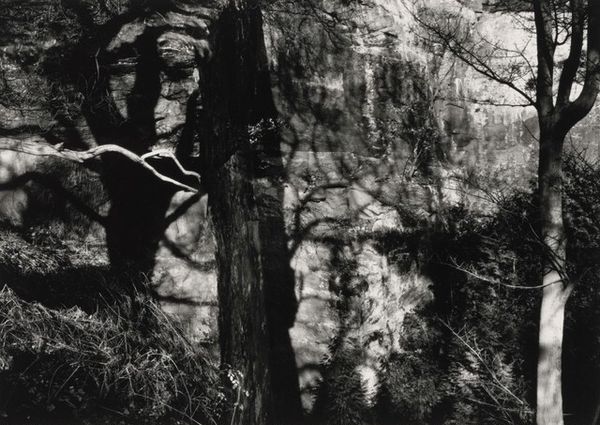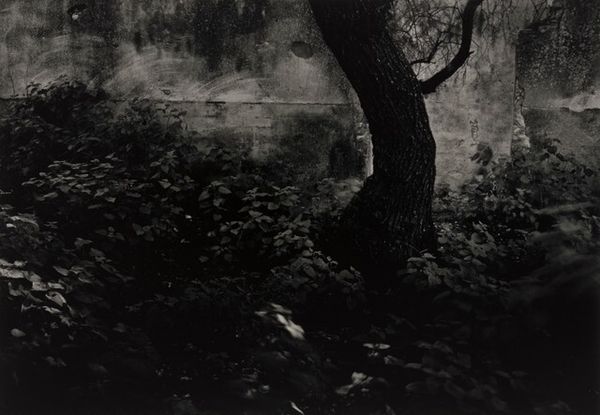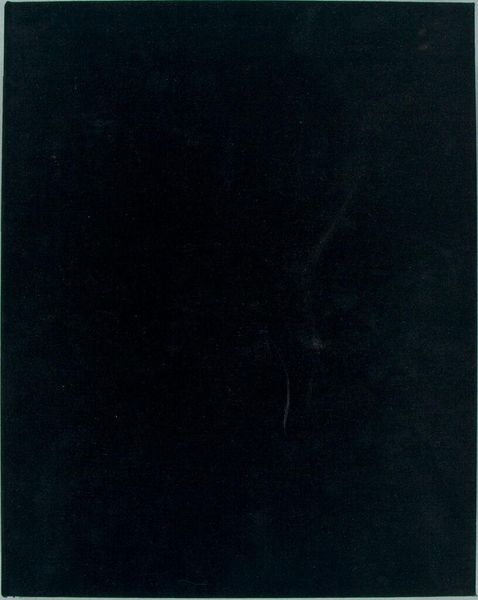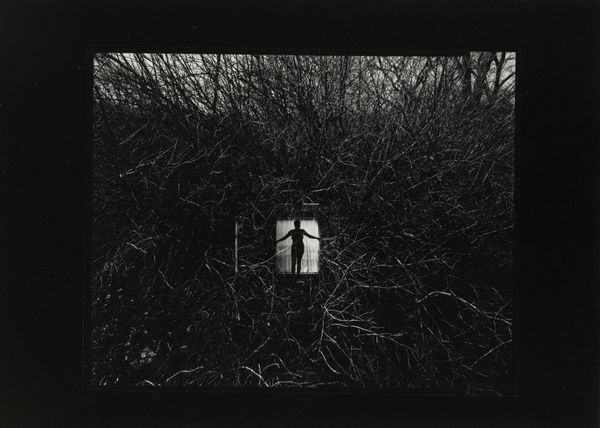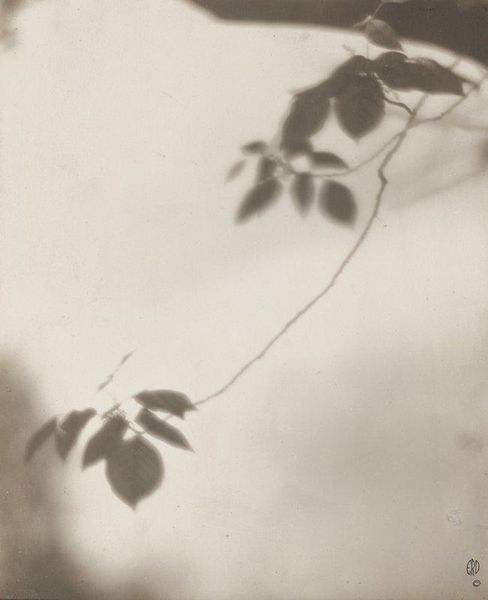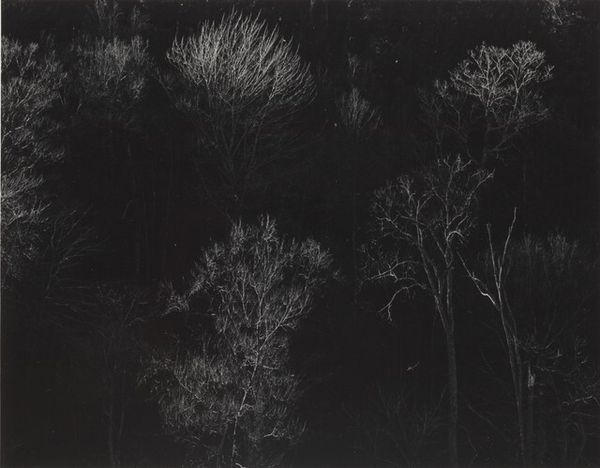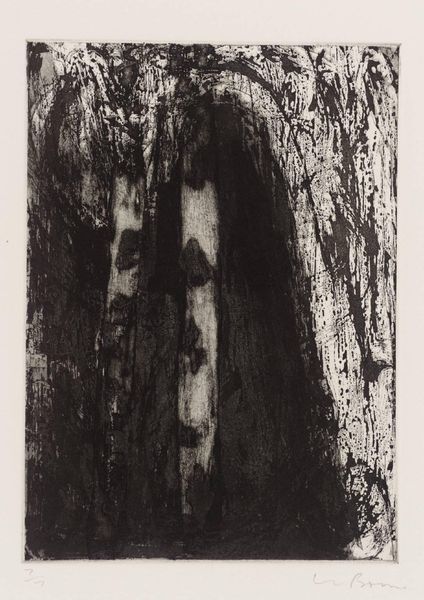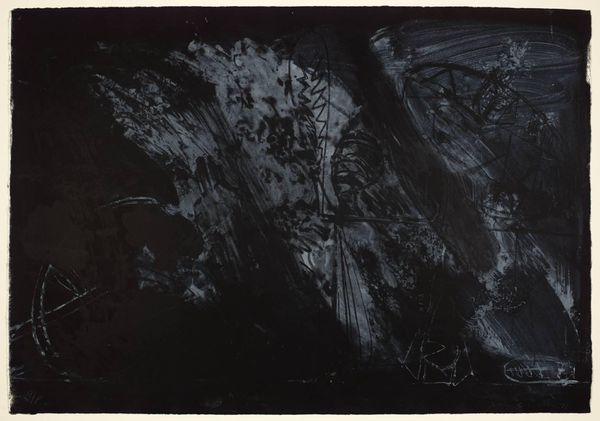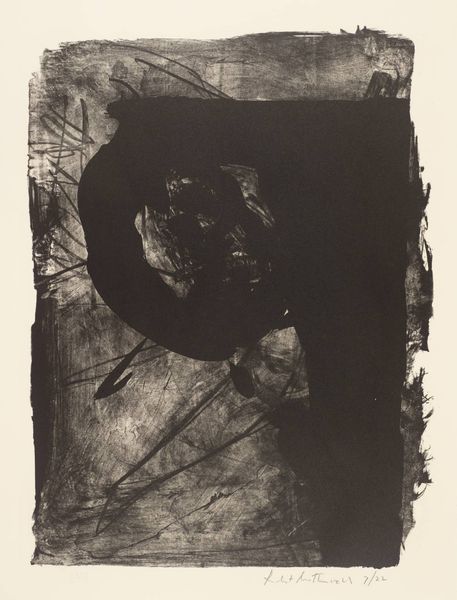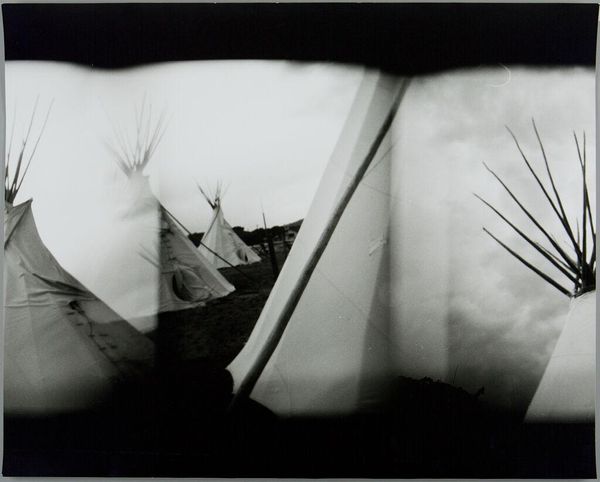
photography, gelatin-silver-print
#
black and white photography
#
photography
#
geometric
#
gelatin-silver-print
#
monochrome photography
#
abstraction
#
line
#
monochrome
#
modernism
#
monochrome
Dimensions: image: 9.3 × 9.55 cm (3 11/16 × 3 3/4 in.) mount: 25.5 × 18.9 cm (10 1/16 × 7 7/16 in.)
Copyright: National Gallery of Art: CC0 1.0
Editor: This is "Capitol Reef, Utah," a 1959 gelatin-silver print by Minor White. It's…stark. Almost entirely black, save for these sharp, white lines and shapes. How would you interpret this work from a formalist perspective? Curator: The initial draw is undeniable. The high contrast establishes a stark dichotomy, a visual binary. Observe how the artist uses a limited tonal range. It’s less about representing the geological structure and more about exploring abstract composition through light and shadow. Editor: So the photograph is not actually about Capitol Reef, even though that’s the title? Curator: The title functions as an anchor, perhaps misleadingly. But consider the composition – the linear elements slice through the deep black void. What do these lines evoke for you? Think less about the “what” and more about the “how.” How are they placed, what sort of geometries emerge? Editor: They almost look like cracks, radiating outwards. It makes me feel uneasy. Curator: Exactly. White doesn’t simply present a landscape. He engineers a system of visual relationships. There is a disruption of space and expectation; this unsettling feeling is integral to the viewing experience. It’s a powerful arrangement of shapes and lines exploiting the very qualities of photographic print. Editor: I never thought about it that way, seeing it more like a study of form. Now I appreciate that it is not only about what's in the image, but also about the elements it's constructed with. Thank you! Curator: Precisely. It prompts one to look deeper at the structures that constitute our visual engagement, whether it be in nature or in art.
Comments
No comments
Be the first to comment and join the conversation on the ultimate creative platform.
